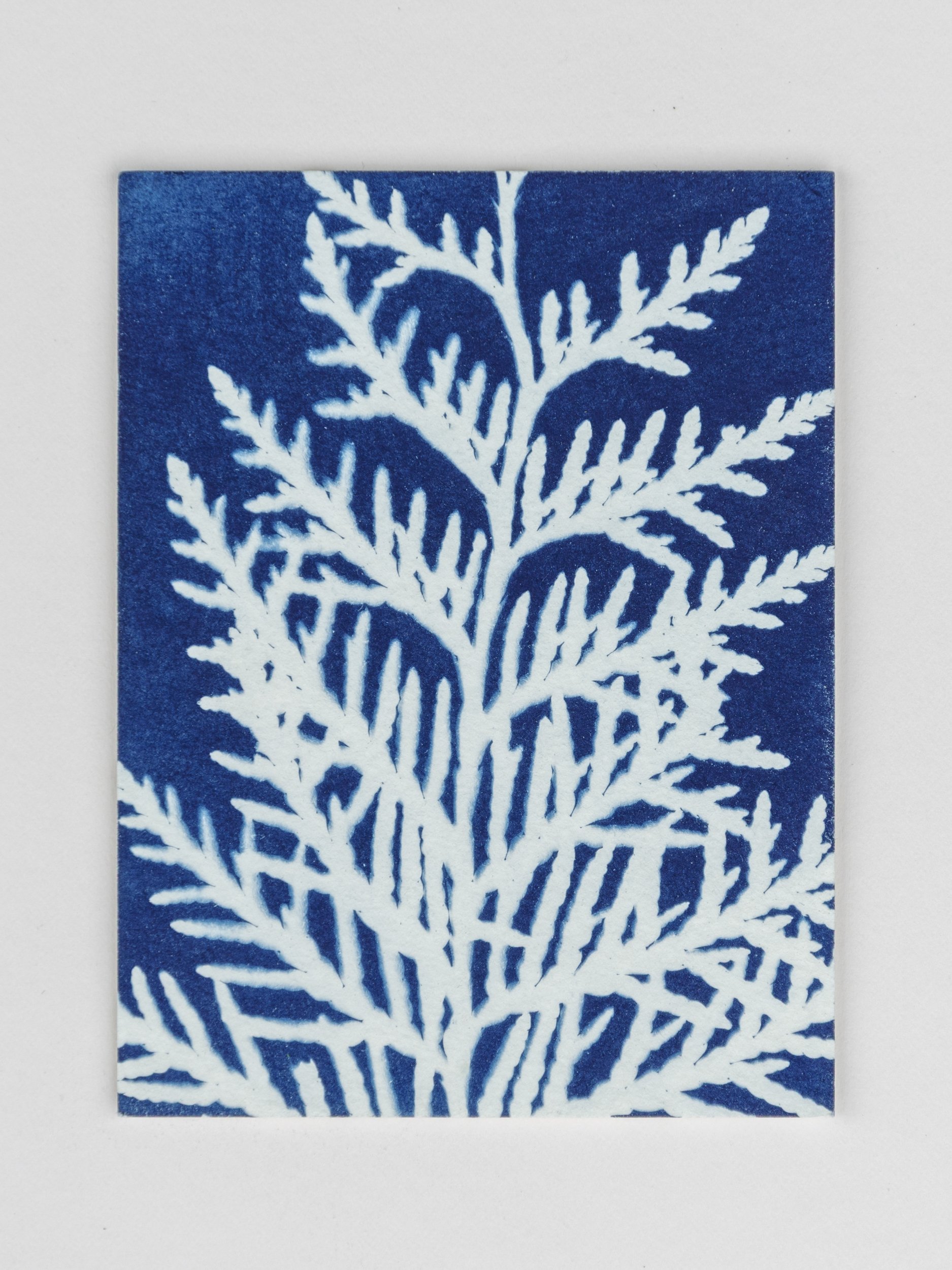
RHS Garden Wisley
Commission for
On The Hedge, 2025
Anna Kroeger
Analogue photography project using plant materials to create images
Artist-in-residence Anna Kroeger spent the first half of 2025 creating two major works for the exhibition On The Hedge at RHS Garden Wisley.
The work was commissioned by curator Gareth Gardner as part of the exhibition project, which followed last year’s successful Close to the Hedge photography show at Gareth Gardner Gallery in Deptford.
For On The Hedge, Anna created artworks using plants gathered from RHS Wisley.
Anna’s work is on display as part of the On The Hedge exhibition of hedge-inspired photography at the Old Laboratory Gallery, RHS Garden Wisley, until 28 October 2025.
Hedge Studies
In Hedge Studies, Anna explored the historic cyanotype process, creating detailed plant prints and toning them with botanicals sourced from RHS Wisley. She used the garden’s rich textures as both her setting and creative partner.
Anna made sequences of six cyanotypes each from 16 pressed hedge samples, presented in a large-scale grid. The initial deep Prussian blue prints of each series were left untoned, but she then used wood ash and plant infusion baths to bleach and tone the others, with tannins, water pH, and immersion time shaping their final colours.
In Quiet Company
For the In Quiet Company series of 12 analogue images, Anna Kroeger explored and photographed hedges and surrounding plant life at RHS Wisley.
She focused on the contrast between the formal, playful shapes of topiary and the looser, organic growth of nearby shrubs – an interplay that shaped how she experienced and captured the space. She then developed the film using plant-based solutions made from hedge species.
Hedges play many vital yet often overlooked roles – as habitats, carbon sinks, food sources, and natural flood management systems. By using plants in her film developers, Anna explored their potential to contribute to sustainable image-making, both visually and materially. Through these photographs, she hopes to spark a sense of wonder and encourage us to see nature not as something to control or exploit, but as something we are inherently part of.
About the artist
Anna Kroeger explores the connection between people and place through sustainable analogue photography.
Originally from Germany, she has spent over a decade living on a narrowboat along England’s canals and rivers. Her close-to-nature lifestyle deeply influences her artistic practice.
In 2024, her project and self-published book As I Walk This Tidal Path was featured in the Gareth Gardner Gallery exhibition DEVELOP+PRINT.
Further reading
-
Creating cyanotypes is a camera-less process using sunlight and light-sensitive chemicals. Plants are placed on coated paper and exposed to light. The paper is then rinsed, producing deep blue images with white silhouettes through a simple yet striking chemical reaction.
Invented in 1842 by Sir John Herschel, cyanotypes gained recognition through botanist Anna Atkins, considered the first female photographer.
Using iron salts instead of toxic silver, the process is more environmentally friendly than many other photographic methods.
The colour of cyanotypes can be modified by soaking in plant-based infusions. Prints can also be bleached by immersing in an alkaline solution, such as a mixture of hardwood ash and water.
-
To process her exposed black-and-white rolls of film for her project In Quiet Company, Anna made a variety of plant-based developers as a more sustainable alternative to conventional darkroom chemistry.
First, the plant matter was boiled or steeped in hot water to extract phenolic acids. This extraction was then mixed with washing soda and vitamin C, creating a DIY film developer.
This solution is capable of converting the light-exposed silver halide crystals in monochrome film into metallic silver, making photographic images visible as negatives.
If stored correctly, the developer can be reused many times.
Anna was first introduced to plant-based developers by artist Melanie King and the charity The Sustainable Darkroom.

































